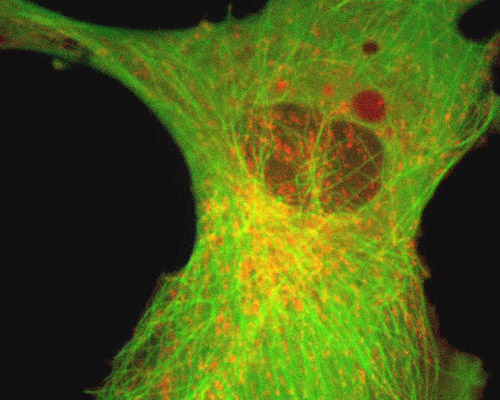Monkey Kidney Cells with mEmerald-Tubulin and mCherry-Rab11a

A specialized variety of tubulin (γ-tubulin) is critical in the organization of microtubules. It forms ring-shaped complexes with proteins that act as templates for the nucleation of microtubules that have expanded to hold the 13 protofilaments characteristic of the microtubule structures.
Rab11a is one of the most heavily investigated of the approximately 70 different Rabs identified in human cells. Scientists have found that that like other Rab proteins, Rab11a plays an important role in vesicle trafficking, specifically in docking and interactions with the actin cytoskeleton. In addition, Rab11a appears to be involved in recycling transferrin and polymeric IgA receptor. Similar to other Rab proteins, Rab 11a is useful in microscopy applications as a marker of endosomes.
The African green monkey kidney fibroblast cells (CV-1 line) appearing in this selection of digital video sequences are shown expressing a mCherry-Rab11a fusion tag, while the intracellular microtubule network was visualized with mEmerald fused to tubulin. mCherry is a red member of the mFruit series of fluorescent proteins produced via the directed evolution of mRFP1. The green fluorescent protein mEmerald is a monomeric high-performance variant of EGFP, which is an enhanced Aequorea derivative.



